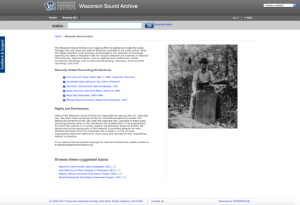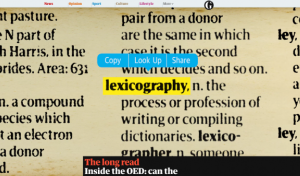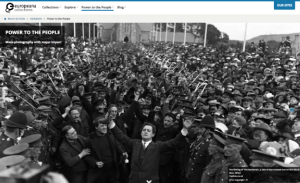 |
March 9, 2018 Volume 24, Number 10 |
Research and Education |
General Interest |
Network Tools |
Revisited |
In the News |
Research and EducationBack to Top | |
 |
|
 |
|
 |
|
 |
|
 |
|
 |
|
 |
|
 |
|
General InterestBack to Top | |
 |
|
 |
|
 |
|
 |
|
 |
|
 |
|
 |
|
 |
|
Network ToolsBack to Top | |
 |
|
 |
|
RevisitedBack to Top | |
 |
|
In the NewsBack to Top | |
New Family Tree Offers Clues About the Role of Genetics in Longevity and the History of Marriage | |
|
When did Americans Stop Marrying Their Cousins? Ask the World's Largest Family Tree 13 million people tracked over 300 years to build massive human family tree Thirteen Million Degrees of Kevin Bacon: World's largest family tree shines light on life span, who marries whom The "Genome Hacker" Who Mapped a 13-Million-Person Family Tree Snippet: Human migration over the centuries based on 86 million public genealogy profiles National Archives: Start Your Genealogy Research Last week, a team of researchers announced that they had constructed a massive family tree based on data from 13 million individuals who use the ancestry website Geni.com. This family tree, created with the aid of the website's software program, includes 5.3 individual family trees and spans from approximately 1650 through 2000. The majority of the individuals included in the tree are people of European descent who lived in Europe, the United States, Canada, and Australia. When they analyzed the collective data from this massive family tree, the research team made a number of interesting findings. For one, the team found that environment seemed to play a much larger role in longevity than genetics: in fact, the data suggested that just 16% of longevity was due to heredity. In addition, the team was able to investigate how marriage patterns changed in Europe and northern North America over time. Prior to the year 1800, marriage between distant cousins was common in these regions. People generally believe that marriage between distant relatives became less common in the early and mid-nineteenth century as people became less geographically isolated. However, the team found that marriage between cousins actually increased between 1825 and 1875 before declining in the late-nineteenth century. This trend suggests that changing social norms and taboos about marriage actually played a larger role in this shift than geographic mobility. This research project was headed by Yaniv Erlich, a researcher at Columbia University. Erlich is also the Chief Science Officer of MyHeritage.com, which owns Geni.com. While some observers are excited at the key role that crowdsourced data played in this study, others are concerned about the potential limitations and risks of this approach. One such concern regards the involvement of private companies, such as Geni.com, in scientific research. Emily Klancher Merchant of the University of California-Davis noted, "When private companies control the data and fund the research, they're the ones gatekeeping what kind of science gets done." [MMB] The first three links this week take readers to three news articles about this new research. These articles come from Natalie Proulx at The New York Times, Kiona N. Smith at Ars Technica, and Jocelyn Kaiser of Science. Next, the fourth link takes readers to an interview with Yaniv Erlich by Sarah Zhang, which was recently published in The Atlantic. Next, the fifth link takes readers to a short video on YouTube published alongside the Science article, illustrating what this new family tree reveals about human migration over time. Finally, for U.S. readers interested in conducting genealogy research themselves, the last link takes readers to the National Archive's collection of genealogy resources. These resources include census records, immigration records, and more. | |





